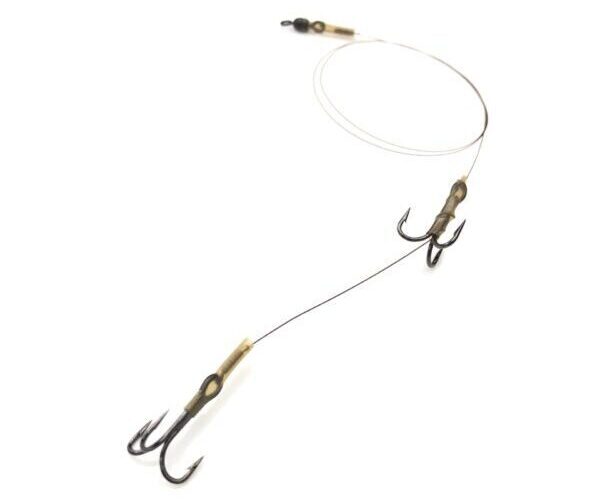When it comes to pike fishing there is one piece of tackle that you have to use and they are Pike traces. To put it simply a Pike trace is a section of multi-strand wire that stops a Pike or Zander from biting through your line. If you don’t have one you risk losing your fish and leaving a set of treble hooks in its mouth.
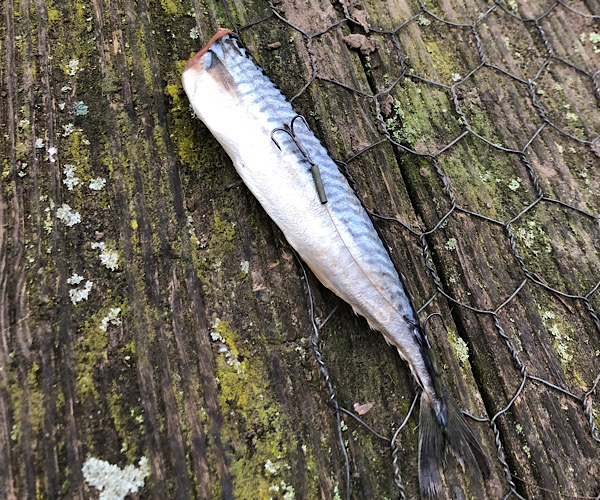
As a rule of thumb you should use a semi barbed hook. Semi-barbed treble hooks feature one barbed hook for placing in your hook bait and two barbless hooks. They are more fish friendly and allows for much easier unhooking of the fish. Most modern pike anglers tend to use this type of hook. For all these patterns of traces you should use a minimum length trace of 18″ and around 20- 30lb breaking strain wire.
Here are a few of the basic patterns of hook traces you should consider if you are starting out predator fishing.
Twin or tandem treble hook (semi barbed)
The most widely used out of all the pike traces. Two treble hooks let you securely hook deadbaits. The ideal hook size to start with is a size 4 or 6 but this depends on the size of deadbait you are using.
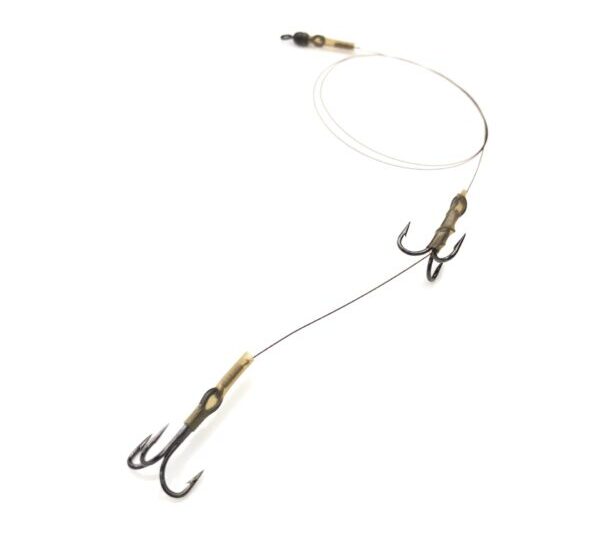 When hooking deadbaits there are two main methods. The first is to insert the barbed hook of each treble into your bait leaving four hooks exposed. The only problem with this is that the hooks that are exposed tend to lie quite close to the bait. If you use two hooks from each treble to secure your bait the remaining hook will sit nice a proud of the bait. It’s a confidence thing so see what works best for you.
When hooking deadbaits there are two main methods. The first is to insert the barbed hook of each treble into your bait leaving four hooks exposed. The only problem with this is that the hooks that are exposed tend to lie quite close to the bait. If you use two hooks from each treble to secure your bait the remaining hook will sit nice a proud of the bait. It’s a confidence thing so see what works best for you.
If you are going to secure two hooks from each then you could try stepping up the hook size.
Single Treble (Semi barbed)
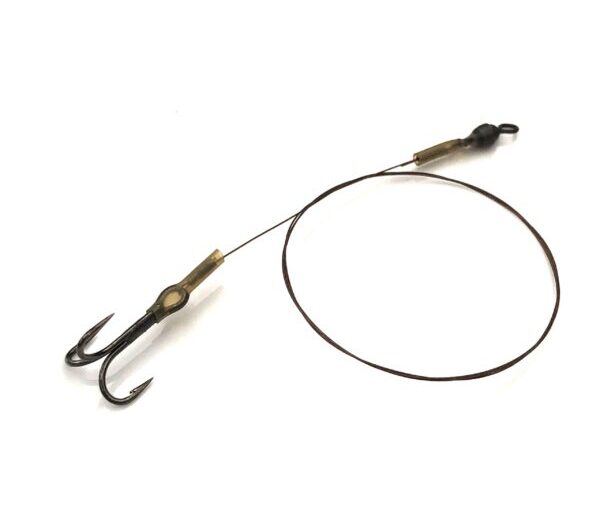 These type of pike traces are ideal for fishing with smaller baits such as sprats or live baits.
These type of pike traces are ideal for fishing with smaller baits such as sprats or live baits.
For sprats hook in the tail remembering to have you hook points facing away from the head of the fish. For live baits hook in the upper lip only. This will allow the fish to breath and stay active for longer.
If you are wanting to twitch deadbaits then hook securely through the lip using the one barbed hook.
Single Circle Hook
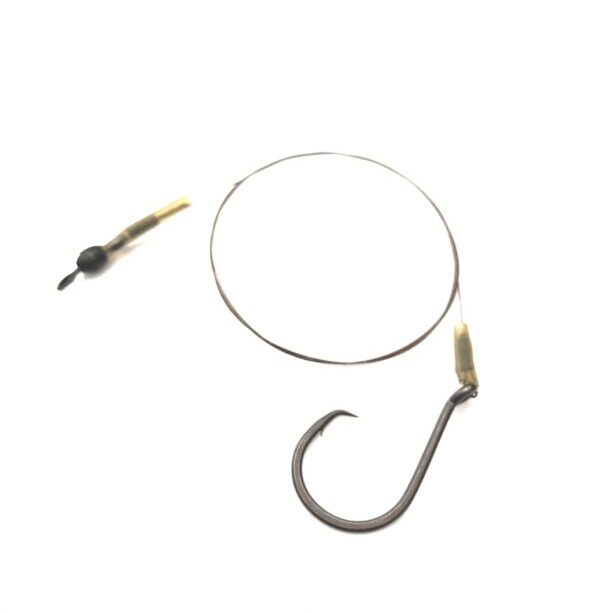 The hook was originally developed to reduced deep hooking and the improved survival of released fish. Circle hooks were designed to hook fish in the corner or the scissors of the mouth, making fish easier to release. Circles have been used successfully with both dead and live baits for many species. You don’t actually strike when using circle hooks. The way of setting the hook is to wind down on the fish steadily allowing the hook to turn into the side of the mouth.
The hook was originally developed to reduced deep hooking and the improved survival of released fish. Circle hooks were designed to hook fish in the corner or the scissors of the mouth, making fish easier to release. Circles have been used successfully with both dead and live baits for many species. You don’t actually strike when using circle hooks. The way of setting the hook is to wind down on the fish steadily allowing the hook to turn into the side of the mouth.
Tandem Double Hook
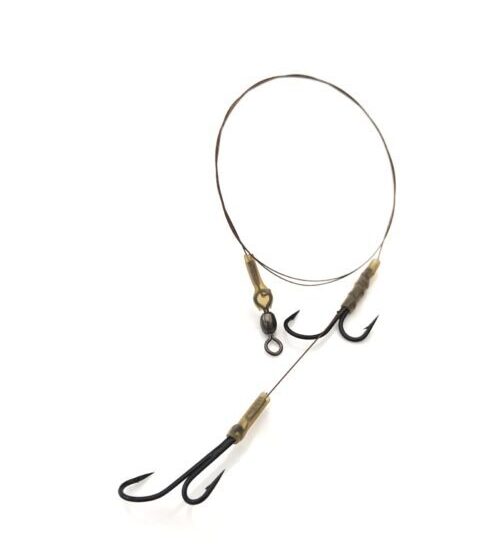 For those of you who wish to use a more refined set up then you can try a tandem double hook rig. There are two hooks that are different sizes. One small hook with a barb for securing the bait and a larger one for hooking the fish.
For those of you who wish to use a more refined set up then you can try a tandem double hook rig. There are two hooks that are different sizes. One small hook with a barb for securing the bait and a larger one for hooking the fish.
This image shows the how you can flatten the barb on the large hooks
Spinning and lure Traces
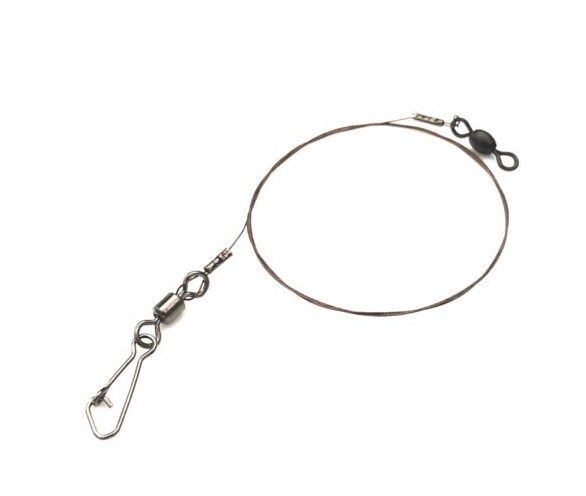 A must when using spinners, plugs and lures.
A must when using spinners, plugs and lures.
Each spin trace is assembled with a rolling swivel fitted to each end, and a type of snap link at the other so you can change your lures easily.
Ideally use some heavy braid when lure fishing. If you do get your lure stuck on something you can pull or straighten the hook out rather than lose an expensive lure.
Have a look at this article. 5 Deadly Deadbaits For Pike

